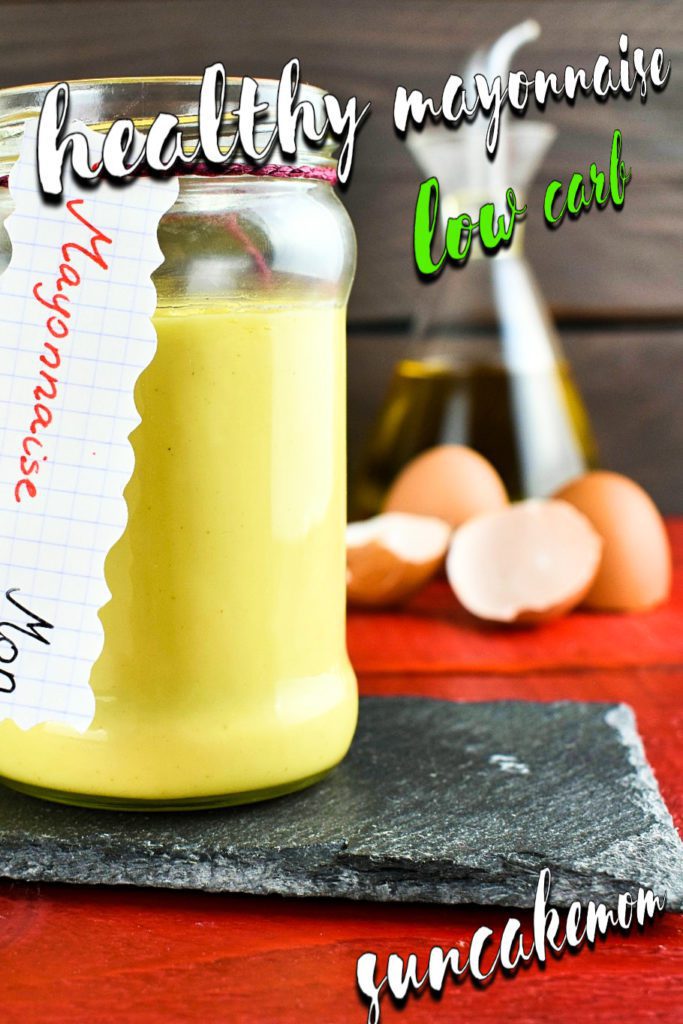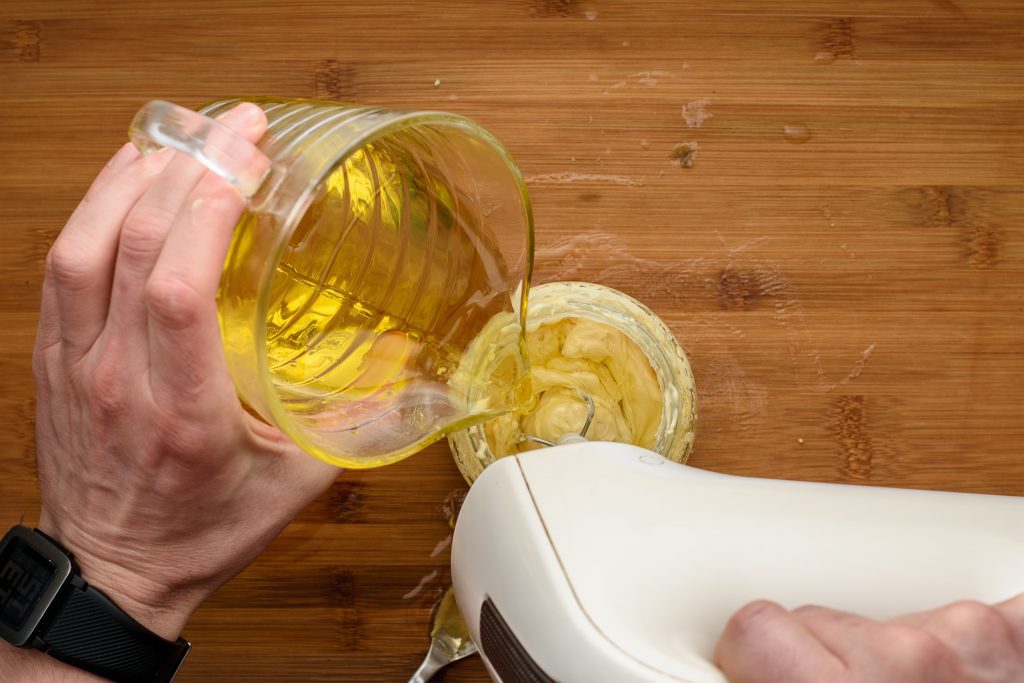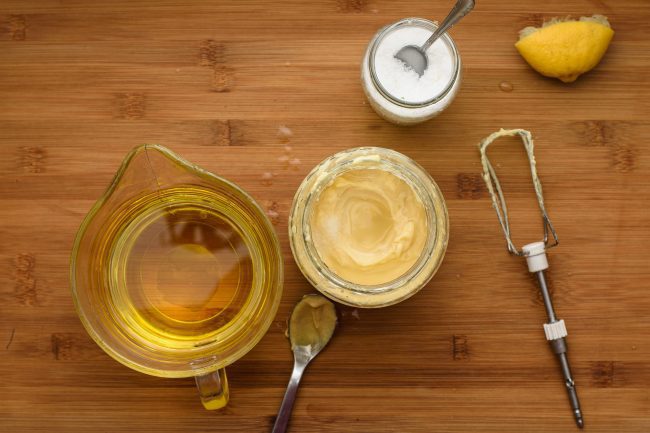Run out of mayo and all the shops are closed? Once its secret is cracked making mayonnaise at home is easy even for kitchen newbies!

Mayonnaise is a beloved condiment and sandwich spread that has been a staple in kitchens and restaurants worldwide. But have you ever wondered about the history behind this creamy and tangy delight? In this article, we will take a deep dive into the origins of the mayonnaise recipe and discover how it has evolved over the years.
What is the origin of mayonnaise recipe?
The origin of the mayonnaise recipe can be traced back to the 18th century in Mahon, a port city in Menorca, Spain. During the War of the Austrian Succession, the French and British troops were battling for control of the city. According to the legend, the French chef of Duke de Richelieu, who was leading the troops, wanted to create a sauce to celebrate their victory. However, he lacked the necessary ingredients for his usual sauce, so he improvised and created a new one using eggs, oil, and vinegar. The sauce was a hit among the soldiers, and they named it “mahonnaise” after the city where it was created.
How did mayonnaise recipe become popular?
After the war, the French soldiers brought the recipe back to France, and it quickly became a sensation among the aristocracy. The creamy and tangy sauce was used as a condiment for meats, seafood, and vegetables, and it also became a popular salad dressing. The mayonnaise recipe was then brought to the Americas by French settlers, and it quickly spread throughout the continent.
Who made mayonnaise recipe famous?
One of the most famous stories involving mayonnaise recipe is about Richard Hellmann, a German immigrant who opened a delicatessen in New York in the early 1900s. Hellmann’s wife, Margaret, was in charge of making the mayonnaise from scratch, which was a hit among their customers. In 1912, Hellmann started selling the mayonnaise commercially in jars, and it quickly became a household name. Hellmann’s Mayonnaise is still one of the most popular brands in the United States and is sold worldwide.
What are the different variations of mayonnaise recipe?
The classic mayonnaise recipe consists of eggs, oil, vinegar, mustard, and lemon juice. However, there are many variations of the recipe that have been created over the years. Some people like to add garlic, herbs, or spices to their mayonnaise to give it more flavor. Others prefer to use different oils, such as avocado oil or olive oil, to make their mayonnaise healthier. Additionally, there are now added sugar-free versions of mayonnaise that cater to people who are trying to avoid sugar in their diet.
Mayonnaise has a rich and interesting history that has made it one of the most beloved condiments in the world. From its humble beginnings in Mahon, Spain, to its worldwide popularity today, mayonnaise has come a long way. Whether you like it as a salad dressing, sandwich spread, or dip, there’s no denying that mayonnaise is a versatile and delicious addition to any meal.

Ingredients
- 1 Egg yolk
- ⅞ cup / 200ml Cooking oil
- 1 teaspoon Mustard
- ¼ Lemon juice
- ¼ teaspoon Salt
- Sweetener of choice (optional)
How to make Mayonnaise
- Break and separate eggs. We will only need the yolks. (We can use the whites in some sugar free desserts like the Floating Islands)

- Get the oil ready by pouring it into a measuring jug. (In case of olive oil use only virgin and NOT extra virgin olive oil because extra virgin olive oil has a very strong flavor). Add the mustard to the egg yolks. We can use an empty jar for this or our favorite mixing bowl. The advantage of the jar is that we don’t mess around that much with bowls and a lid can be put on it when it’s done. However, the jar requires a bit of practice as it can spin around if the beater touches the side of the jar.

- Whisk yolks in a mixing bowl. Pour oil very slowly into the bowl of whisked yolks. Pour only a few drops at a time whilst whisking constantly. With a bit of luck it will thicken eventually. When it is thickened we can pour the oil a bit faster but still in a slow and steady stream. When half of the oil is poured in the mayo should be nice and thick. If it isn’t thick by now then the mayo has failed. Get a clean set of tools and try again. The failed creation can be incorporated into the successful attempts later.

- Add the lemon juice and salt. Enjoy the whitening magic lemon juice does to the mayo. Optionally, if we are looking for a shop like mayonnaise flavor pour in some sweetener too.

- Keep whisking and adding the second half of the oil until the end. In case we have any failed attempts that didn’t thicken or broke up then this is the time to use it.

- Keep homemade mayonnaise in the fridge refrigerated in an airtight container like the jar we have just used. Use it for about 6 days.

We can make a little reusable label by wrapping both side of piece of paper with transparent tape. This way we can easily write the made by date of our mayonnaise and wipe it off when we prepare a new batch. How easy it is to make tasy low carb condiments, right?

Making condiments low carb, gluten free or sugar free is not only easy but comes completely naturally for them.


Star this recipe!
Homemade Mayonnaise Recipe
Ingredients
- 1 Egg yolk
- ⅞ cup Cooking oil
- 1 teaspoon Mustard
- ¼ Lemon juice
- ¼ teaspoon Salt
- Sweetener of choice optional
Instructions
- Break and separate eggs. We will only need the yolks. (We can use the whites in some sugar free desserts like the Floating Islands)

- Get the oil ready by pouring it into a measuring jug. (In case of olive oil use only virgin and NOT extra virgin olive oil because extra virgin olive oil has a very strong flavor). Add the mustard to the egg yolks. We can use an empty jar for this or our favorite mixing bowl. The advantage of the jar is that we don't mess around that much with bowls and a lid can be put on it when it's done. However, the jar requires a bit of practice as it can spin around if the beater touches the side of the jar.

- Whisk yolks in a mixing bowl. Pour oil very slowly into the bowl of whisked yolks. Pour only a few drops at a time whilst whisking constantly. With a bit of luck it will thicken eventually. When it is thickened we can pour the oil a bit faster but still in a slow and steady stream. When half of the oil is poured in the mayo should be nice and thick. If it isn't thick by now then the mayo has failed. Get a clean set of tools and try again. The failed creation can be incorporated into the successful attempts later.

- Add the lemon juice and salt. Enjoy the whitening magic lemon juice does to the mayo. Optionally, if we are looking for a shop like mayonnaise flavor pour in some sweetener too.

- Keep whisking and adding the second half of the oil until the end. In case we have any failed attempts that didn't thicken or broke up then this is the time to use it.

- Keep homemade mayonnaise in the fridge refrigerated in an airtight container like the jar we have just used. Use it for about 6 days.

Notes
Pin now, Enjoy later!














I love making my own mayo! It’s much more delicious than the store bought thing and I can go berserk with ingredients any time I wish for.
That’s the beauty of homemade stuffs!
Make more new posts please 🙂
I tried it with olive oil but it has a very strong taste. What oil do you use?
There are big differences between different type of olive oils. Extra virgin olive oils generally aren’t the best option for smooth tasting mayo but there are some smooth ones that can be used for frying and mayo too. For a milder taste look for smooth olive oils that has their acidity reduced. These are generally lower quality oils than the extra virgin olive oil and cheaper too.